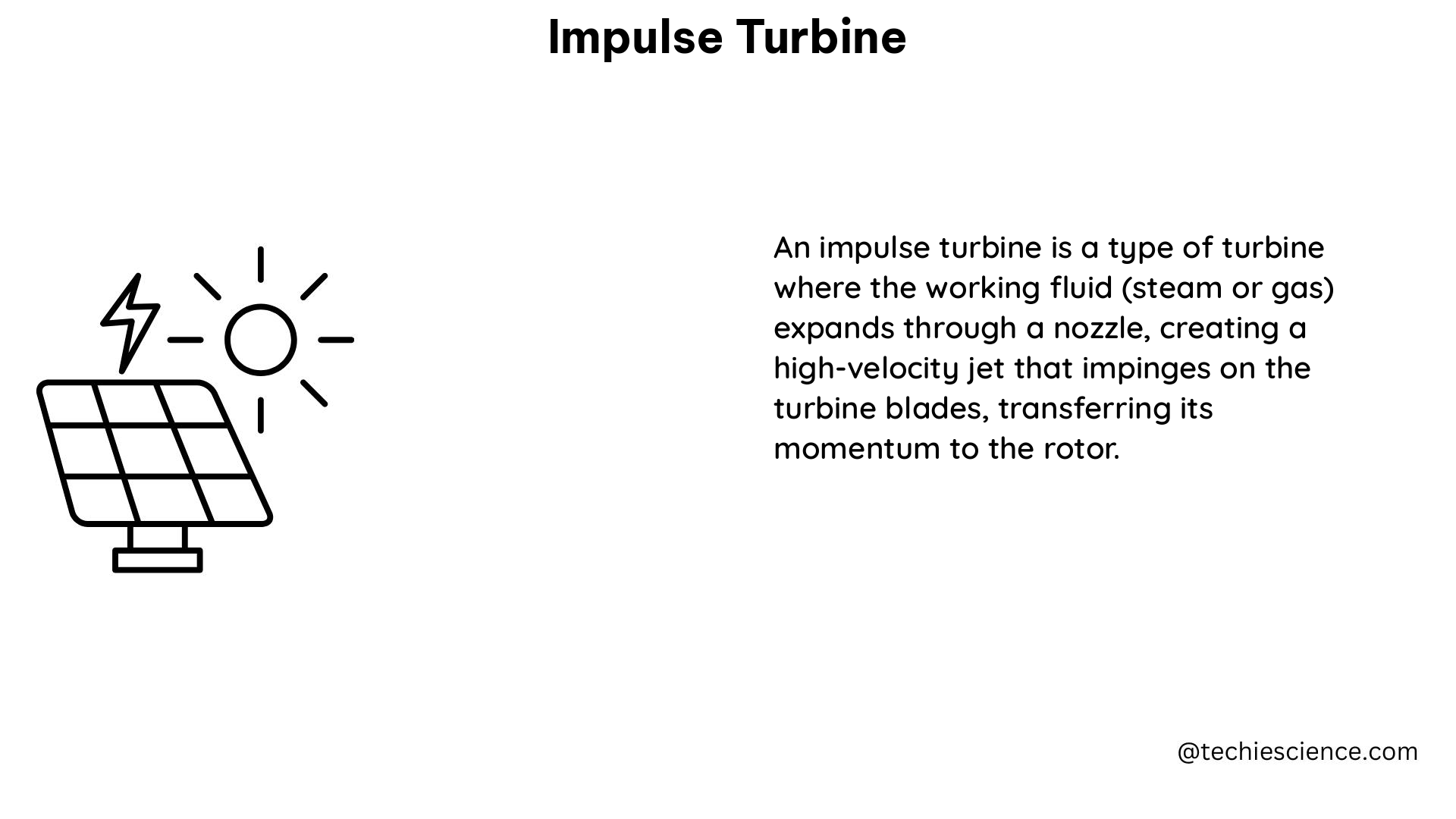Impulse turbines are a type of hydraulic turbine used in hydropower systems to convert the energy of moving water into mechanical energy, which is then used to generate electricity. These turbines are known for their ability to work efficiently with high-speed, low-flow rate water sources, such as mountain streams or rivers, making them a popular choice for small-scale and remote hydropower applications.
Specific Speed (Ns)
Specific speed is a dimensionless number that characterizes the geometry and performance of an impulse turbine. It is calculated using the formula: Ns = N * √Q / H^(3/4), where N is the turbine’s rotational speed (in rpm), Q is the flow rate (in m³/s), and H is the head (in meters). Specific speed helps classify turbines into different categories, such as high-specific-speed or low-specific-speed turbines.
For example, a Pelton wheel turbine typically has a low specific speed, around 10-30, while a Turgo turbine has a higher specific speed, around 30-50. The specific speed of an impulse turbine is an important design parameter, as it affects the turbine’s size, speed, and efficiency.
Jet Nozzle Design

The design and size of the jet nozzle(s) play a crucial role in controlling the flow rate and velocity of the fluid jet that impacts the turbine blades. The nozzle(s) need to be carefully designed to optimize energy transfer while avoiding cavitation (formation of vapor bubbles) at the nozzle throat.
For instance, a Pelton wheel turbine typically has one or more nozzles that direct a high-speed jet of water, with velocities ranging from 150 to 300 m/s, onto the turbine’s buckets. The nozzle diameter can vary from a few centimeters to over a meter, depending on the turbine size and flow rate requirements.
Bucket Design
In impulse turbines like the Pelton wheel, the buckets or cups that capture the fluid jet’s energy are a critical component. The shape, size, and number of buckets can impact the turbine’s efficiency and power output. Efficient bucket design ensures that the kinetic energy of the fluid is effectively transferred to the rotor.
A Pelton wheel turbine typically has specially designed buckets that are shaped like a spoon or a double-cupped design, with a splitter in the middle to split the water jet and redirect it tangentially. The bucket width can range from 10 to 100 cm, and the number of buckets can vary from 12 to 36, depending on the turbine size and operating conditions.
Runner Design
The runner is the rotating part of the turbine that is directly connected to the shaft. It contains the buckets or blades that receive the impact of the fluid jet. The runner design should maximize the conversion of kinetic energy into mechanical work and minimize losses.
For example, a Pelton wheel turbine typically has a simple runner design with a circular shape and specially designed buckets. The runner diameter can range from 0.5 to 5 meters, and the number of buckets can vary from 12 to 36, depending on the turbine size and operating conditions.
Efficiency
Turbine efficiency is a crucial characteristic that measures how effectively the turbine converts the kinetic energy of the fluid into mechanical energy. High-efficiency turbines minimize energy losses and maximize power generation.
A Pelton wheel turbine typically has an efficiency of around 90%, making it a highly efficient turbine. The efficiency of an impulse turbine can be influenced by factors such as the jet nozzle design, bucket design, runner design, and flow control mechanisms.
Flow Control
Impulse turbines often incorporate flow control mechanisms to adjust the flow rate of water, especially in cases where the water source varies in flow. These mechanisms may include variable nozzles or wicket gates.
For example, a Pelton wheel turbine may incorporate a variable nozzle that adjusts the flow rate of water based on the available flow. This allows the turbine to maintain high efficiency over a wider range of operating conditions.
Materials of Construction
The materials used in constructing the turbine components, such as the runner and casing, must be selected to withstand the operating conditions, including the abrasiveness of the fluid, temperature, and pressure.
For example, a Pelton wheel turbine may be constructed from materials such as stainless steel or cast iron, which are capable of withstanding the high-speed impact of water. The runner blades may be made from erosion-resistant materials like tungsten carbide or chromium-nickel alloys to minimize wear and tear.
Head and Flow Range
Impulse turbines are well-suited for applications where there is a significant vertical drop (head) in the water source. They can efficiently convert the potential energy of falling water into mechanical work.
A Pelton wheel turbine can operate efficiently with heads ranging from a few meters to several hundred meters, with typical head ranges of 50 to 1,500 meters. The flow rate can vary from a few liters per second to several cubic meters per second, depending on the turbine size and application.
By understanding and optimizing these key design parameters, engineers can develop highly efficient and reliable impulse turbines for a wide range of hydropower applications, from small-scale off-grid systems to large-scale grid-connected power plants.
References:
– Specific Speed and Efficiency Characteristics of Impulse Turbines
– Efficiency Curves for a 15 m Impulse Turbine
– Impulse Turbine Design and Applications

The lambdageeks.com Core SME Team is a group of experienced subject matter experts from diverse scientific and technical fields including Physics, Chemistry, Technology,Electronics & Electrical Engineering, Automotive, Mechanical Engineering. Our team collaborates to create high-quality, well-researched articles on a wide range of science and technology topics for the lambdageeks.com website.
All Our Senior SME are having more than 7 Years of experience in the respective fields . They are either Working Industry Professionals or assocaited With different Universities. Refer Our Authors Page to get to know About our Core SMEs.